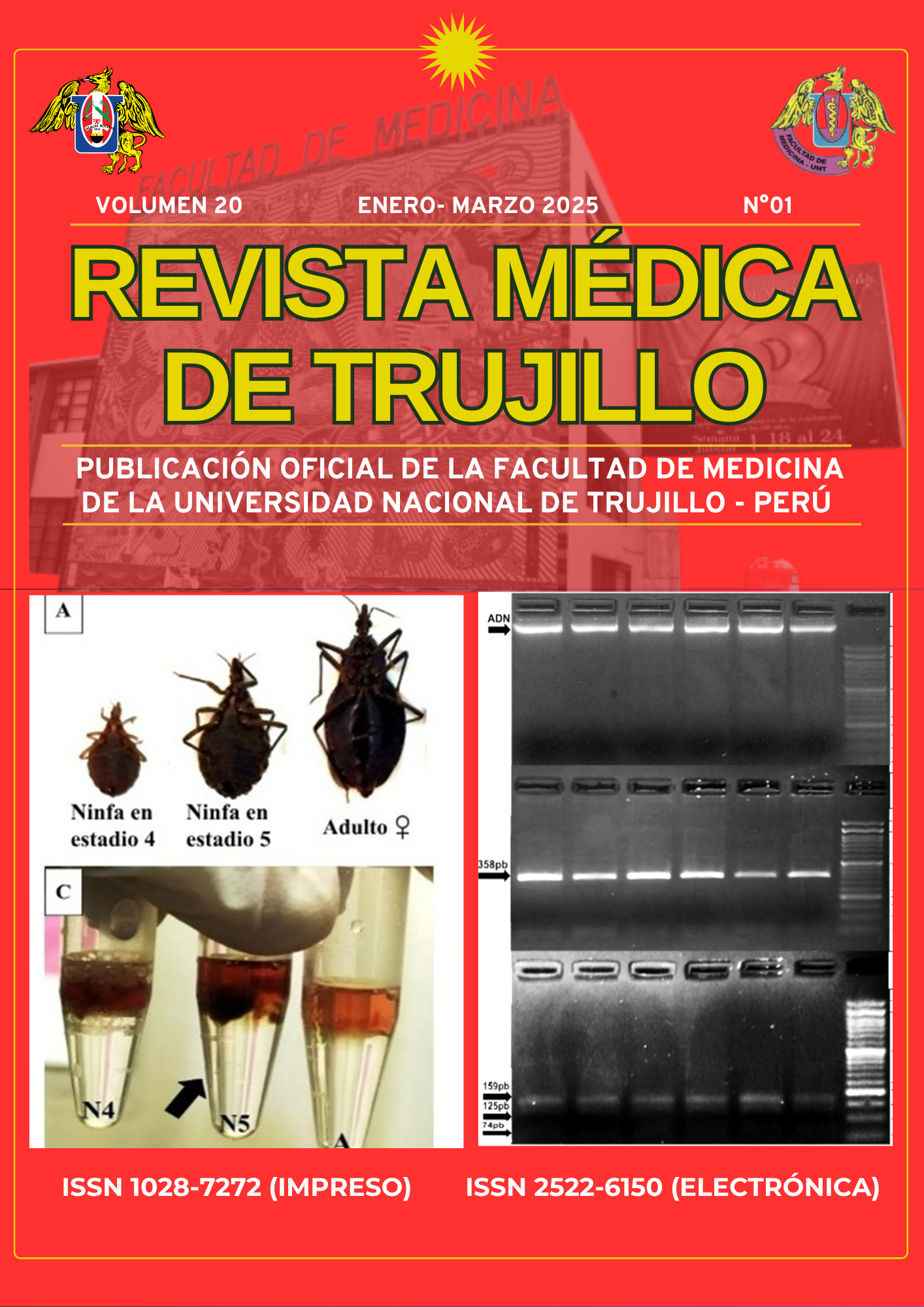Detection time of the CytB gene in the identification of food sources of Panstrongylus chinai Chagas vector in Peru
DOI:
https://doi.org/10.17268/rmt.2025.v20i1.6469Keywords:
In vitro, Panstrongylus, citocromo b, PCR, RFLPAbstract
Objetive: Determine the detection time of the Cytb gene in the identification of food sources of Panstrongylus chinai, a vector of Chagas disease in Peru. Methods: A descriptive and experimental research design was conducted, analyzing three treatments (TP1, TP2, and TP3), each consisting of three Panstrongylus chinai triatomines. The triatomines were fed on Gallus gallus (chicken), and blood was isolated from the insect abdomen according to the time elapsed since feeding. The evaluated times were 48 hours (TP1), 120 hours (TP2), and 192 hours (TP3). Total DNA was extracted from the isolated blood cells, the Cytb gene was amplified by PCR, and enzymatic digestion was performed with the restriction enzyme HaeIII. Detection of the Cytb gene for food source identification was carried out using a PCR-RFLP assay. Results: Blood was successfully isolated in treatments TP1 and TP2, and the Panstrongylus chinai triatomines survived the procedure. In contrast, no blood was isolated in TP3, and the analyzed specimens did not survive. DNA was extracted and the Cytb gene was amplified from all blood samples. The enzymatic digestion of the Cytb gene with HaeIII revealed DNA fragments of 159 bp, 125 bp, and 74 bp, which correspond to the RFLP of the Cytb gene in Gallus gallus. Conclusion: Cytb gene detection for identifying food sources of Panstrongylus chinai is viable up to 120 hours post-feeding.
Downloads
Published
How to Cite
Issue
Section
License
Copyright (c) 2025 "Los autores conservarán sus derechos de autor y garantizarán a la revista el derecho de primera publicación de su obra"

This work is licensed under a Creative Commons Attribution-NonCommercial 4.0 International License.










